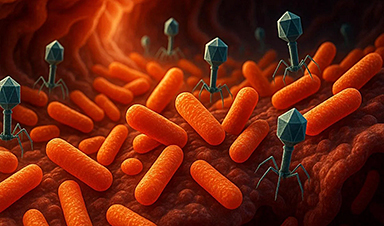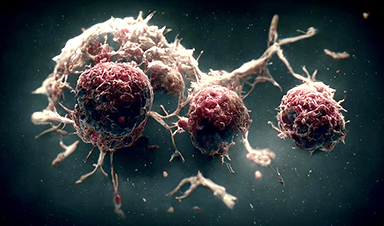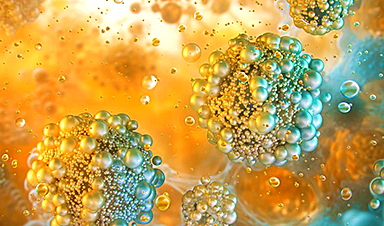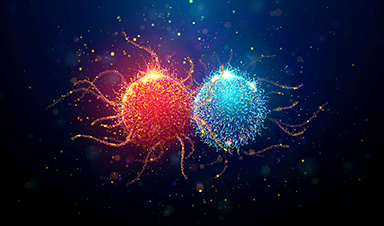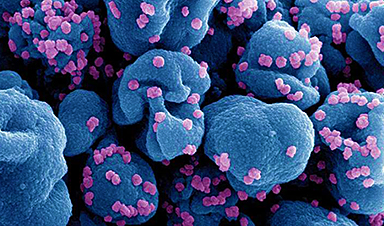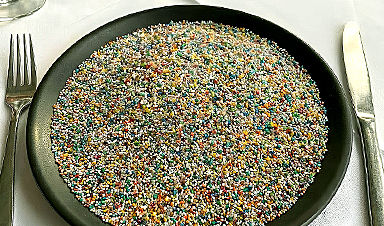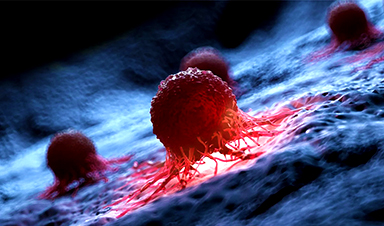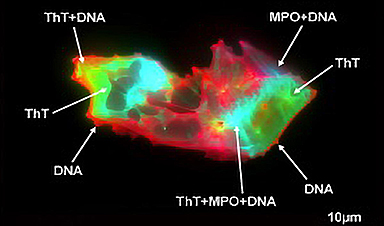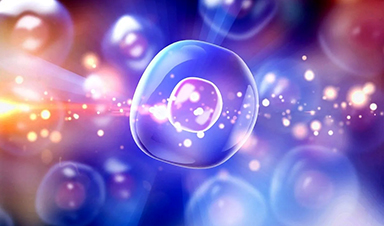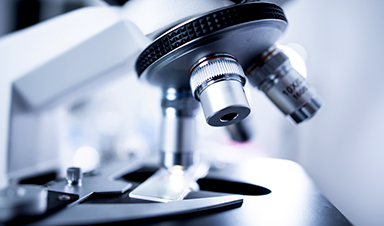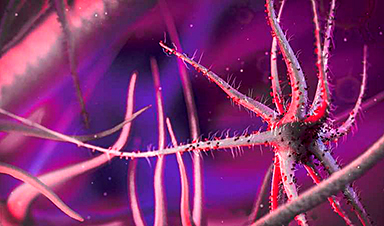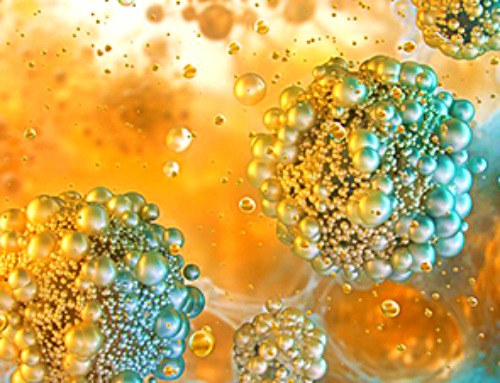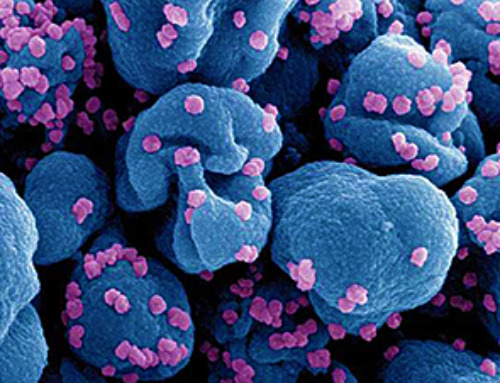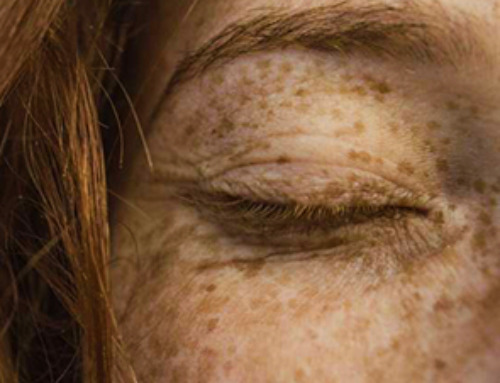Scientists have long known that bacteriophages, viruses that infect bacteria, live in our gut, but exactly what they do has remained elusive.
Researchers developed a clever mouse model that can temporarily eliminate these phages without harming the bacteria, using a UTI treatment ingredient called acriflavine. Their experiments showed that without phages, gut bacteria become less sensitive to antibiotics, suggesting that these tiny viruses might actually worsen the microbiome damage antibiotics cause. This surprising connection could lead to new breakthroughs in gut health research.
Gut Viruses: The Overlooked Partners of Bacteria
Some things are just meant to be together: peanut butter and jelly, salt and pepper — and in your gut, bacteria and the viruses that infect them.
These viruses, known as bacteriophages, naturally target the bacterial species living in your digestive system. Although phages have evolved alongside bacteria for millions of years, they remain far less understood. They're tricky to classify and so closely intertwined with their bacterial hosts that scientists still aren't sure exactly what roles they play.
But what if researchers could compare a gut microbiome with and without these viruses, under otherwise identical conditions?
A New Way to Study Phages
At Virginia Tech, biologist Bryan Hsu and his team figured out how to do just that.
Hsu and graduate student Hollyn Franklin developed a model that can selectively remove bacteriophages from a mouse's gut microbiome — and later restore them — without disturbing the bacteria themselves. In early tests of the model, the researchers found intriguing evidence that phages might actually make gut bacteria more sensitive to antibiotics. Their findings were published today (April 28) in the journal Cell Host & Microbe.
Acriflavine: The Phage-Silencing Compound
What could inhibit a bacteria's viruses but not the bacteria itself? In her early search through the literature, Franklin found a chemical compound called acriflavine that fit the bill. It's a component of a widely available medication used in Brazil to treat urinary tract infections (UTI).
Fortuitously, a member of Hsu's lab and paper co-author, Rogerio Bataglioli, is a native Brazilian. He shipped a massive order of acriflavine to his parent's house. But he forgot to tell his parents it was coming, Hsu said.
"His mom called, and asked, 'Is everything OK? Because 20 boxes of UTI treatment just arrived under your name.'"
From UTI Medicine to Breakthrough Experiment
After that was sorted, Franklin began administering acriflavine to lab mice. Over a period of 12 days, there was a dramatic reduction in the concentration of viral particles. And they didn't bounce back when she stopped administering the drug.
But when Franklin reintroduced a tiny sample of the mouse's own gut microbiome, extracted before treatment, the natural phage populations sprang back to life.
"It went away when we wanted it to, and came back when we wanted it to," said Hsu. "Which means we have a bacteriophage conditional mouse model."
Or, more fun: BaCon mouse model.
The Power of a Switchable Microbiome
To see if the mouse model had some significance for health, Hsu's research team went straight to one of the hottest topics in the field: the collateral damage that antibiotics have on a patient's resident microbial population.
Antibiotics save millions of lives every year, but the drug rages indiscriminately through bad, benign, and beneficial bacteria alike, disrupting our gut microbiome and leaving us vulnerable to new pathogens.
Antibiotics, Gut Microbes, and Phage Interference
Could phages be playing a role in the destructive wake of an antibiotic treatment? Hsu and Franklin used their BaCon mouse model to ask this question and administered antibiotics to mice with and without phage populations.
Their results suggest that phages increase the sensitivity of bacteria to antibiotics.
"It's hard to make definitive conclusions, but these results are telling us that phages have some significance for how we respond to antibiotics," Hsu said.
Phages: Potential Game Changers in Microbiome Health
The next questions, according to Franklin, will explore if phages caused these effects or are simply correlated with them, and what role phages play in diseases, which would open new doors in microbiome studies.
Answers may be served with a side of BaCon mouse.
Reference: 28 April 2025, Cell Host & Microbe.
Funding for this work was provided by the Virginia Tech Institute for Critical Technology and Applied Science, the National Institute of General Medical Sciences of the National Institutes of Health.
Research collaborators include:
- Frank Aylward, associate professor of biological sciences
- Anh Ha, postdoctoral research associate
- Rita Makhlouf, graduate student, biological sciences
- Zachary Baker, graduate student, biological sciences
- Sydney Murphy ´24, former undergraduate researcher in the Hsu Lab
- Hannah Jirsa ´23, former undergraduate researcher in the Hsu Lab
- Joshua Heuler, graduate student, biological sciences
- Teresa Southard, associate professor of anatomic pathology
News
Scientists Melt Cancer’s Hidden “Power Hubs” and Stop Tumor Growth
Researchers discovered that in a rare kidney cancer, RNA builds droplet-like hubs that act as growth control centers inside tumor cells. By engineering a molecular switch to dissolve these hubs, they were able to halt cancer [...]
Platelet-inspired nanoparticles could improve treatment of inflammatory diseases
Scientists have developed platelet-inspired nanoparticles that deliver anti-inflammatory drugs directly to brain-computer interface implants, doubling their effectiveness. Scientists have found a way to improve the performance of brain-computer interface (BCI) electrodes by delivering anti-inflammatory drugs directly [...]
After 150 years, a new chapter in cancer therapy is finally beginning
For decades, researchers have been looking for ways to destroy cancer cells in a targeted manner without further weakening the body. But for many patients whose immune system is severely impaired by chemotherapy or radiation, [...]
Older chemical libraries show promise for fighting resistant strains of COVID-19 virus
SARS‑CoV‑2, the virus that causes COVID-19, continues to mutate, with some newer strains becoming less responsive to current antiviral treatments like Paxlovid. Now, University of California San Diego scientists and an international team of [...]
Lower doses of immunotherapy for skin cancer give better results, study suggests
According to a new study, lower doses of approved immunotherapy for malignant melanoma can give better results against tumors, while reducing side effects. This is reported by researchers at Karolinska Institutet in the Journal of the National [...]
Researchers highlight five pathways through which microplastics can harm the brain
Microplastics could be fueling neurodegenerative diseases like Alzheimer's and Parkinson's, with a new study highlighting five ways microplastics can trigger inflammation and damage in the brain. More than 57 million people live with dementia, [...]
Tiny Metal Nanodots Obliterate Cancer Cells While Largely Sparing Healthy Tissue
Scientists have developed tiny metal-oxide particles that push cancer cells past their stress limits while sparing healthy tissue. An international team led by RMIT University has developed tiny particles called nanodots, crafted from a metallic compound, [...]
Gold Nanoclusters Could Supercharge Quantum Computers
Researchers found that gold “super atoms” can behave like the atoms in top-tier quantum systems—only far easier to scale. These tiny clusters can be customized at the molecular level, offering a powerful, tunable foundation [...]
A single shot of HPV vaccine may be enough to fight cervical cancer, study finds
WASHINGTON -- A single HPV vaccination appears just as effective as two doses at preventing the viral infection that causes cervical cancer, researchers reported Wednesday. HPV, or human papillomavirus, is very common and spread [...]
New technique overcomes technological barrier in 3D brain imaging
Scientists at the Swiss Light Source SLS have succeeded in mapping a piece of brain tissue in 3D at unprecedented resolution using X-rays, non-destructively. The breakthrough overcomes a long-standing technological barrier that had limited [...]
Scientists Uncover Hidden Blood Pattern in Long COVID
Researchers found persistent microclot and NET structures in Long COVID blood that may explain long-lasting symptoms. Researchers examining Long COVID have identified a structural connection between circulating microclots and neutrophil extracellular traps (NETs). The [...]
This Cellular Trick Helps Cancer Spread, but Could Also Stop It
Groups of normal cbiells can sense far into their surroundings, helping explain cancer cell migration. Understanding this ability could lead to new ways to limit tumor spread. The tale of the princess and the [...]
New mRNA therapy targets drug-resistant pneumonia
Bacteria that multiply on surfaces are a major headache in health care when they gain a foothold on, for example, implants or in catheters. Researchers at Chalmers University of Technology in Sweden have found [...]
Current Heart Health Guidelines Are Failing To Catch a Deadly Genetic Killer
New research reveals that standard screening misses most people with a common inherited cholesterol disorder. A Mayo Clinic study reports that current genetic screening guidelines overlook most people who have familial hypercholesterolemia, an inherited disorder that [...]
Scientists Identify the Evolutionary “Purpose” of Consciousness
Summary: Researchers at Ruhr University Bochum explore why consciousness evolved and why different species developed it in distinct ways. By comparing humans with birds, they show that complex awareness may arise through different neural architectures yet [...]
Novel mRNA therapy curbs antibiotic-resistant infections in preclinical lung models
Researchers at the Icahn School of Medicine at Mount Sinai and collaborators have reported early success with a novel mRNA-based therapy designed to combat antibiotic-resistant bacteria. The findings, published in Nature Biotechnology, show that in [...]
